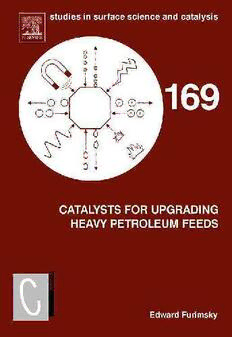
Catalysts for Upgrading Heavy Petroleum Feeds PDF
385 Pages·2007·8.018 MB·English
Most books are stored in the elastic cloud where traffic is expensive. For this reason, we have a limit on daily download.
Preview Catalysts for Upgrading Heavy Petroleum Feeds
Description:
The book provides the most up-to-date information on testing and development of hydroprocessing catalysts with the aim to improve performance of the conventional and modified catalysts as well as to develop novel catalytic formulations. Besides diverse chemical composition, special attention is devoted to pore size and pore volume distribution of the catalysts. Properties of the catalysts are discussed in terms of their suitability for upgrading heavy feeds. For this purpose atmospheric residue was chosen as the base for defining other heavy feeds which comprise vacuum gas oil, deasphalted oil and vacuum residues in addition to topped heavy crude and bitumen. Attention is paid to deactivation with the aim to extent catalyst life during the operation. Into consideration is taken the loss of activity due to fouling, metal deposition, coke formed as the result of chemical reaction and poisoning by nitrogen bases. Mathematical models were reviewed focussing on those which can simulate performance of the commercial operations. Configurations of hydroprocessing reactors were compared in terms of their capability to upgrade various heavy feeds providing that a suitable catalyst was selected. Strategies for regeneration, utilization and disposal of spent hydroprocesing catalysts were evaluated. Potential of the non-conventional hydroprocessing involving soluble/dispersed catalysts and biocatalysts in comparison with conventional methods were assessed to identify issues which prevent commercial utilization of the former. A separate chapter is devoted to catalytic dewaxing because the structure of dewaxing catalysts is rather different than that of hydroprocessing catalysts, i.e., theobjective of catalytic dewaxing is different than that of the conventional hydroprocessing, The relevant information in the scientific literature is complemented with the Patent literature covering the development of catalysts and novel reactor configurations.
See more
The list of books you might like
Most books are stored in the elastic cloud where traffic is expensive. For this reason, we have a limit on daily download.
